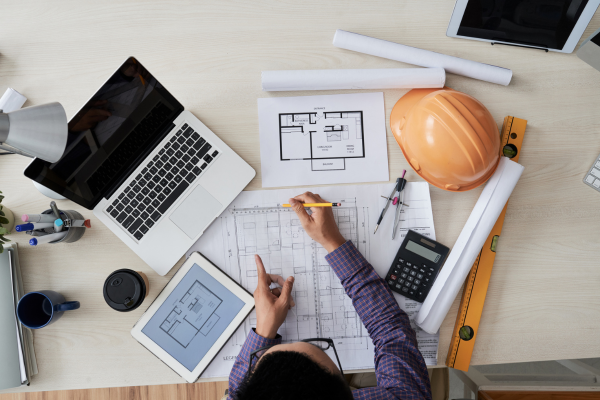
Are You BIM Ready? The Future Waits for No One!
Building Information Modeling, or BIM, is changing how we make buildings. It's like having a digital twin of a building before it's even built. Think of it as a smart model that helps everyone involved in making a building work better together. From architects to builders, BIM makes sure everyone's on the same page, helping avoid mistakes and saving money. But, like any new tool, it's got its challenges. This blog will walk you through what BIM can do, the bumps you might hit along the way, and how to smooth them out. Whether you're new to BIM or looking to get more from it, we're here to help make sense of it all. Let's dive into the world of BIM together and see how it's shaping the future of construction.
The Potential of BIM in Construction
Imagine building not just with bricks and mortar but with data and insights. That's what BIM brings to construction. It allows everyone involved, from architects to engineers, to see a building in 3D before it's even built. This isn't just about making pretty pictures; it's about making smarter decisions. With BIM, errors on paper become a thing of the past, saving time and money. It also means buildings are greener and more efficient, as BIM helps choose the best materials and designs for the environment. The real power of BIM is in its ability to make every step of construction clearer, faster, and more cost-effective. As we look ahead, BIM's potential to transform construction is immense, promising projects that are better built and better for our planet.

Common Challenges of Implementing BIM
Jumping into BIM isn't always smooth sailing. Think of it like learning to drive a high-tech car when you're used to an old truck. First, there's the big puzzle: figuring out what BIM really means for your project. It's not just about fancy software; it's about changing how teams work together. Sometimes, there's too much or too little information, making it hard to get the balance right.
Then, there's the people part. Getting everyone trained on BIM can be tough, especially when folks are set in their ways. Imagine trying to coordinate a dance where everyone knows a different routine. That's what it's like getting teams to work together using BIM.
Cost can also be a hurdle. Investing in new software and training doesn't come cheap, and it can scare off smaller companies. Plus, when you're working with tight budgets, every penny counts.
But the real kicker is change. Change is hard. It means new ways of working, new tools, and sometimes, stepping out of comfort zones. It's like trying to write with your other hand if you're not ambidextrous. Awkward at first, but with practice, it gets better.
Despite these challenges, the effort to adopt BIM is worth it. Overcoming these hurdles is like clearing a path for a smoother, more efficient construction process down the road.

Overcoming the Challenges
Facing BIM's challenges head-on starts with education. Teaching your team about BIM's benefits can turn skeptics into supporters. Invest in training that makes BIM less of a mystery and more of a tool everyone wants to use.
Next, plan your BIM journey like a road trip. Know where you're starting, where you want to end up, and the stops along the way. This means setting clear goals, choosing the right software, and deciding how BIM fits into your projects.
Remember, BIM is a team sport. Encourage open communication and collaboration across all levels of your project. Sometimes, bringing in an expert or a consultant can help bridge gaps and smooth out the learning curve.
Lastly, be patient but persistent. Change takes time, and the move to BIM is no exception. Celebrate small victories along the way and keep your eyes on the long-term benefits: fewer mistakes, lower costs, and better buildings.

The Future of BIM in Construction
Looking ahead, BIM's role in construction is only going to get bigger and better. We're moving towards a future where every construction project, big or small, could be enhanced by BIM. This means more efficient builds, cost savings, and less environmental impact. Imagine a world where every building is optimized for energy use, where every construction plan is as error-free as possible, and where projects come to life faster and within budget. That's the future BIM is paving the way for. As technology evolves, so too will BIM's capabilities, making it an indispensable tool in the construction industry's toolbox.
As we wrap up, remember that BIM isn't just a passing trend; it's a powerful shift in how we build. The journey to fully embracing BIM comes with its ups and downs, but the destination is worth it. It's about creating better, smarter, and more sustainable buildings. So, let's keep pushing forward, learning, and adapting. The future of construction is bright with BIM at its core, shaping a world where every structure is built not just for today but for tomorrow too.
Embrace the BIM, and watch as your projects – and your business – reach new heights of success. For more visit bidlight.com.